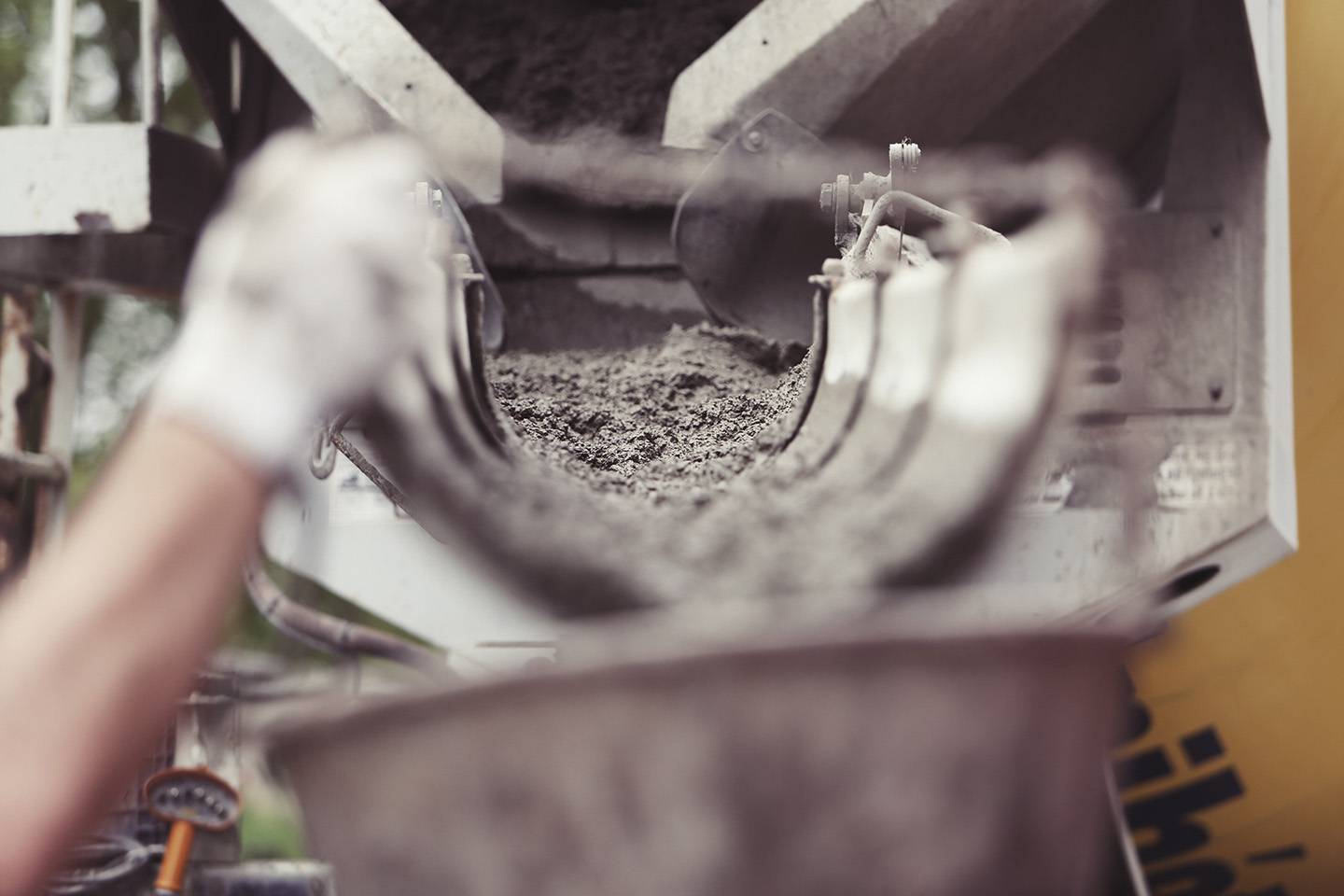Researcher works to reduce carbon footprint of concrete construction
Jayme Blaschke | July 15, 2019

When it comes to developing and evaluating new and sustainable cement-based materials used in concrete and increasing their application in modern construction practice, Fred Aguayo, an assistant professor in the Department of Engineering Technology, is striving to make Texas State University a leader in the field.
Most concrete used today relies on environmentally unfriendly materials, so Aguayo's research group focuses on finding ways to reduce the carbon footprint in concrete construction while maintaining or improving long-term performance.
In the production of concrete, the primary ingredient, Portland cement powder, typically provides mechanical strength and binding properties. While most concrete producers use this type of cement in their mixtures, new alternative binders can partially or completely replace it. Many of these alternatives are formulated to have similar or improved performance to that of ordinary Portland cement. Aguayo's research group is looking at how to move from conventional Portland cement to alternative or non-Portland cement binders with better environmental results and improved durability. The research primarily focuses on two ways of doing this:
- Use more environmentally-friendly binders: Using binders that don’t require as much heat or energy to be produced reduces the amount of harmful emissions. The production of Portland cement requires a significant amount of heat and burns high amounts of calcium carbonate (CaCO3), which releases CO2 into the atmosphere. The release of this harmful greenhouse gas is often seen as the "ugly" side of the concrete industry. The reality is that when compared to many other building materials such as iron or steel, Portland cement production is better controlled, with significantly lower emissions.
Fortunately, several other binder systems on the market don’t require as much energy for production and have similar and, in some cases, better qualities than Portland cement. The long-term history and research performance of these alternatives is limited, making their use in the field minimal compared to Portland cement. Aguayo's research is designed to reverse this trend by increasing the understanding of how alternative binders perform. - Use waste materials in concrete: In addition to better understanding the use of alternative binder systems, Aguayo's group also focuses on how waste material can be utilized to increase concrete’s performance. This ultimately has two positive effects: it recycles material and reduces the amount of waste being landfilled; and reduces the amount of cement used in concrete, ultimately reducing harmful emissions.
The Aguayo team was recently awarded a research project by the Texas Department of Transportation (TxDOT) designed to accelerate the construction time of Texas highways and bridges through the use of rapid-setting hydraulic cements. The team will investigate the feasibility and potential of using these materials in structural concrete.
"For this project, we are looking at some interesting alternative binders. These are considered rapid-setting/hardening cements because they can become as strong as 28-day-old Portland cement concrete in a matter of just a few hours," Aguayo said. "Because of this unique characteristic, these binders are often used in repair applications that need to be completed as quickly as possible, such as highway pavement and lane/traffic closures.
"However, they have very little use in structural concrete such as columns, beams, piers, etc. due to their limited research in long-term performance," he said. "In fact, TxDOT specifications currently do not allow them to be used in structural concrete at all because of this."
Because of the fast-setting characteristics, these alternative binders have the potential for use in bridge and road construction, significantly reducing the length of these projects. Aguayo's research will evaluate the long-term performance of such materials, and if the results are positive, this will potentially bring significant cost savings to construction projects, increase safety and ease the burden millions of frustrated drivers face when commuting through construction projects.
Share this article
For more information, contact University Communications:Jayme Blaschke, 512-245-2555 Sandy Pantlik, 512-245-2922 |